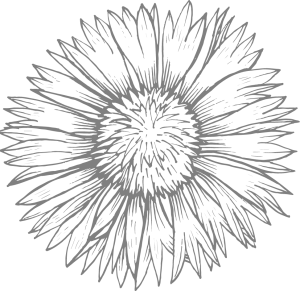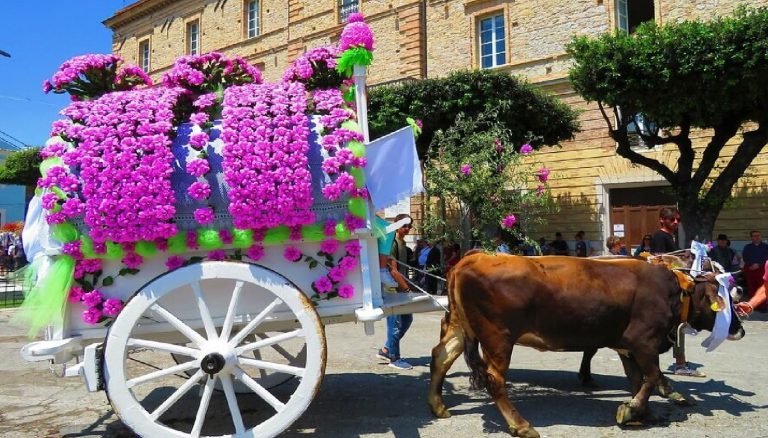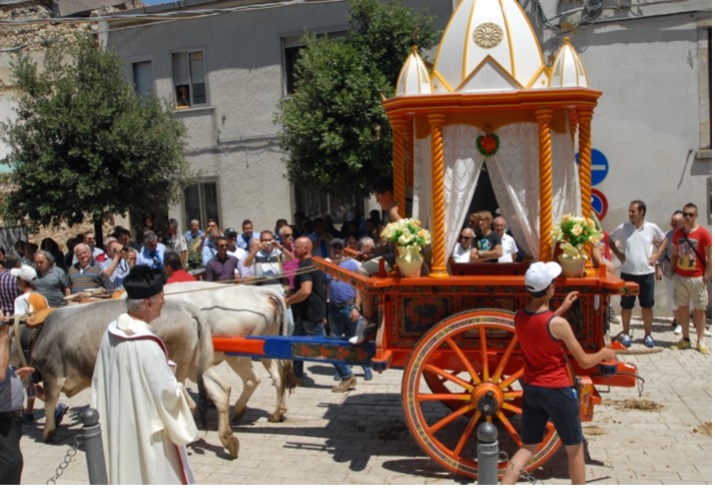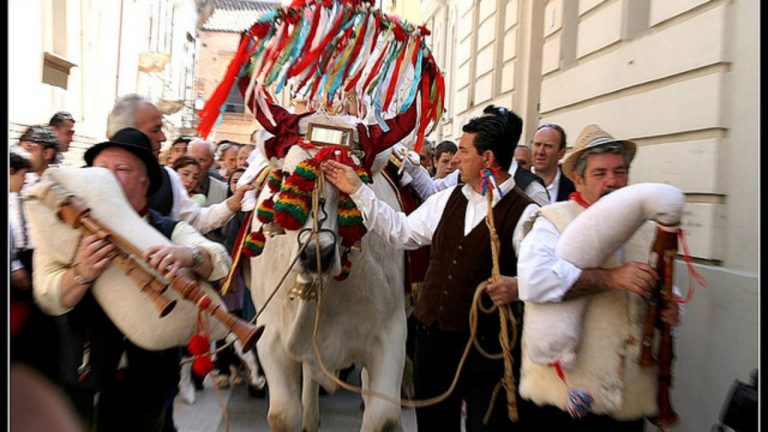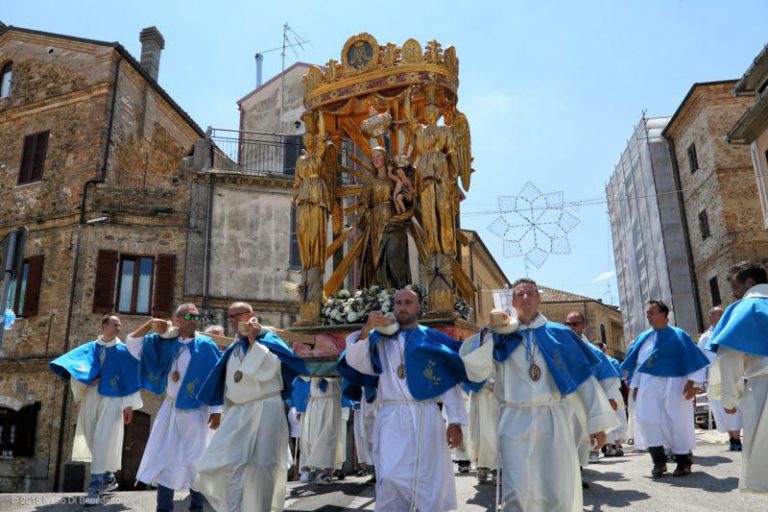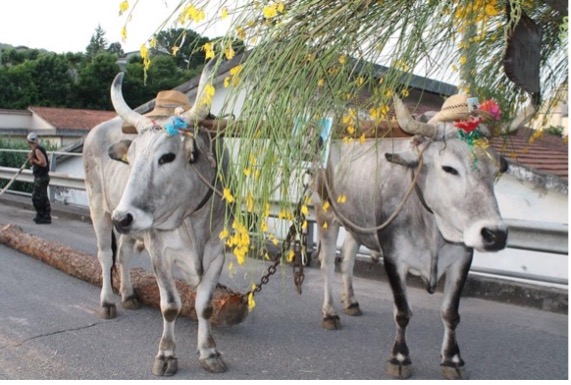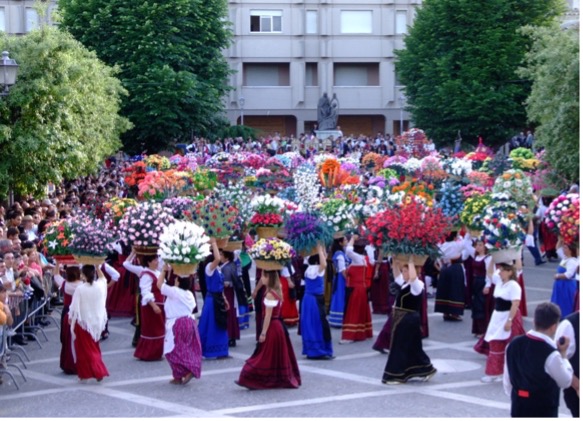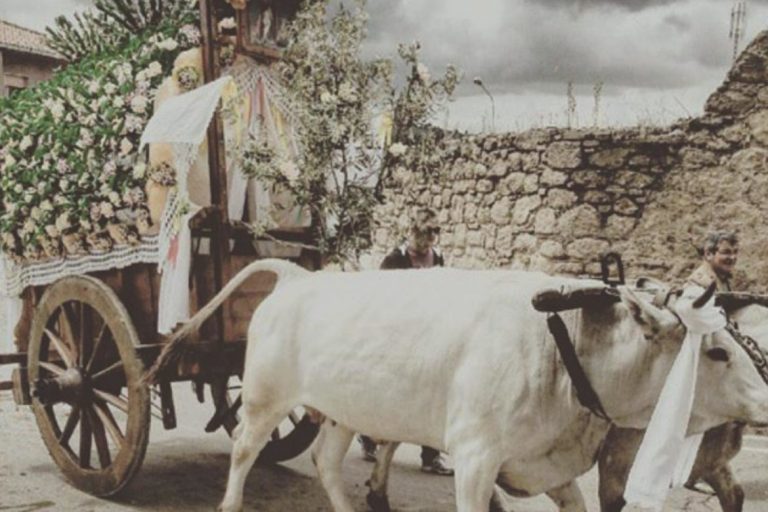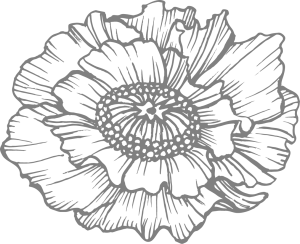THE PROJECT
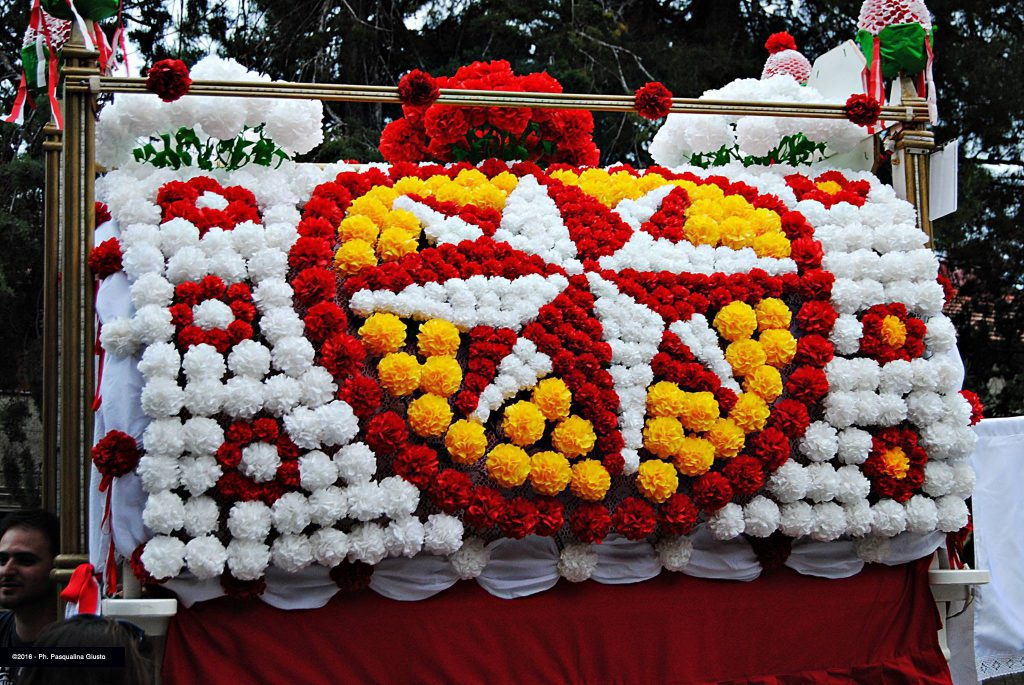
THE PROJECT
This is a large group of ceremonial events characterised by rural-urban routes, ritually performed with ox-drawn carts or accompanying yoked oxen adorned with flowers (made of crepe paper or decorated with fresh flowers/fruits/vegetables) or yoked and decorated cattle carrying tree elements to triumphantly enter the village space. These particular expressions of spirituality express in the context influenced by the specific forms of Catholic religiosity the communities’ devotion to patron saints – largely connected with farming activities and the relationship with animals (St Anthony of Padua, St Isidore, as well as many Marian devotions and some particular patron saints). Seasonal movements have always been very important in communities historically characterised by agricultural activity, even where today there is a significant transformation in the social, economic and professional fabric of groups of caretakers and practitioners. Some of the roles and, more generally, the system of knowledge and practices contained and transmitted through these ceremonials are very similar and consistent, despite the differences that necessarily differentiate these bio-cultural heritages from one another: men who prepare, train, manage and feed the animals and maintain and equip yokes and carts; women who prepare paper flowers and the floral or vegetable decorations of the carts (or yokes) and the ritual foods to be consumed at particular ceremonial moments, but also guardians of the fine set of related craft activities. The paths sacralise the space between the rural area and the built-up area and renew a close cooperation and interaction between man and animal, contributing to the maintenance of an agro-pastoral memory in societies that are also highly renewed and modernised. Great importance in ceremonies is given to songs and/or dances performed along the route and other devotional gestures performed by participants and/or animals (shared sacrifice of the common path of men and animals, kneeling of oxen, prayers and special emotional involvement of participating men and women at specific moments along the route). In the larger processions, considerable value is placed on the processional order and more generally on the organisational forms (lists, internal regulations of the Feast Committees or Confraternities, statutes, sequences, competitions for the processional order) and the appreciation expressed by those attending the processions for the various family or group floats.
